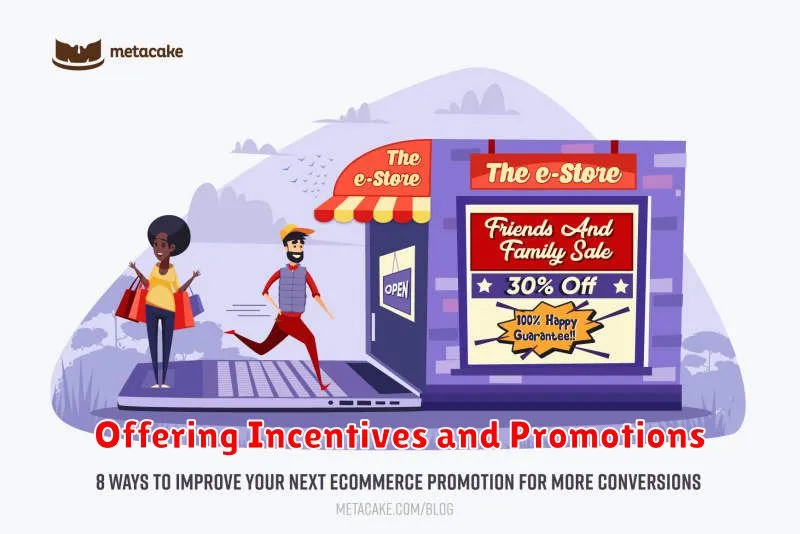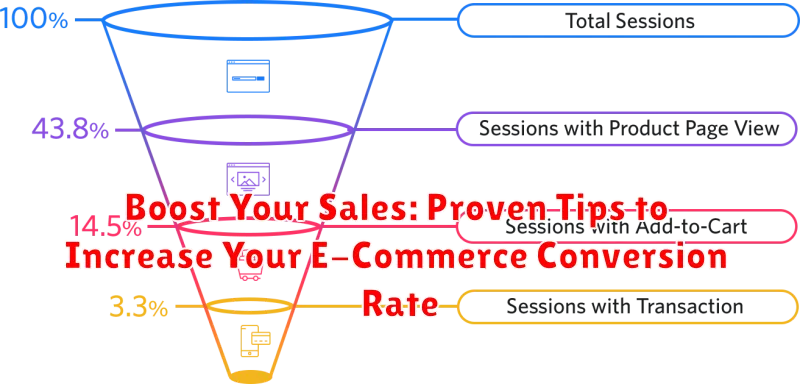In today’s competitive e-commerce landscape, simply driving traffic to your online store isn’t enough. You need to convert those visitors into paying customers. This means optimizing your e-commerce conversion rate, a key performance indicator (KPI) that measures the percentage of visitors who complete a desired action, such as making a purchase. A higher conversion rate translates directly to increased sales and revenue, making it a vital focus for any online business. This article will explore proven tips and strategies to help you boost your sales by significantly improving your e-commerce conversion rate.
From optimizing your website design and user experience to implementing effective marketing tactics and leveraging data analytics, we’ll cover a range of actionable steps you can take to maximize your sales potential. Whether you’re a seasoned e-commerce entrepreneur or just starting out, these proven tips will provide you with the knowledge and tools necessary to attract, engage, and convert more customers, ultimately boosting your sales and achieving sustainable growth in the competitive world of online retail. Learn how to effectively target your audience, streamline the checkout process, and build trust to encourage conversions and significantly improve your e-commerce conversion rate.
Understanding Your Target Audience
Knowing your target audience is the cornerstone of any successful e-commerce strategy. Without a clear understanding of who you’re selling to, your marketing efforts will be scattered and ineffective. This understanding allows you to tailor your messaging, product offerings, and overall user experience to resonate with the specific needs and desires of your potential customers.
Start by identifying key demographics such as age, gender, location, income level, and education. This foundational data provides a general overview of your customer base. However, don’t stop there. Delve deeper into psychographics, which explore the values, interests, lifestyles, and attitudes of your audience. Understanding what motivates your target audience, their pain points, and their aspirations will enable you to connect with them on a more personal level.
Conduct thorough market research using surveys, polls, and analytics tools to gather valuable insights. Analyze your existing customer data to identify trends and patterns in purchasing behavior. By understanding their preferences and online habits, you can refine your marketing strategies and optimize your website for conversions.
Optimizing Your Website for Conversions
A well-optimized website is crucial for driving conversions. User experience plays a vital role in encouraging visitors to complete desired actions, such as making a purchase or signing up for a newsletter.
Site speed is paramount. A slow-loading website can lead to high bounce rates and lost sales. Optimize images, leverage browser caching, and minimize HTTP requests to improve loading times.
Mobile responsiveness is no longer optional. With a significant portion of online traffic coming from mobile devices, ensure your website adapts seamlessly to different screen sizes. A responsive design provides a consistent user experience across all devices.
Clear call-to-actions (CTAs) are essential. Guide visitors towards desired actions with prominent and strategically placed CTAs. Use compelling language and visually appealing buttons to encourage clicks.
Intuitive navigation helps visitors find what they’re looking for quickly and easily. A well-structured website with clear menus and logical categories improves user experience and reduces frustration.
Creating Compelling Product Descriptions
Product descriptions are your silent sales representatives. They bridge the gap between seeing a product and wanting to buy it. A compelling description answers questions, highlights benefits, and ultimately persuades customers to add to cart.
Start by understanding your target audience. What language do they use? What are their pain points? Write directly to them, addressing their needs and desires. Focus on the benefits, not just the features. Explain how the product will improve their lives or solve their problems. For example, instead of stating “500 thread count sheets,” explain the luxurious feel and comfortable sleep they provide.
Use vivid language and sensory details to paint a picture of the product in the customer’s mind. Imagine they are holding it in their hands. What do they see, feel, and experience?
Finally, optimize for search engines. Incorporate relevant keywords to improve visibility in search results. However, maintain a natural flow and avoid keyword stuffing.
Streamlining the Checkout Process
A complicated checkout process is a major deterrent for online shoppers. Simplify every step to encourage conversions. Minimize the number of required fields, and offer guest checkout options to avoid forcing account creation. Clearly display shipping costs and delivery timelines upfront to avoid surprises.
Offer multiple payment options to cater to diverse customer preferences. Accepting major credit cards, digital wallets, and other popular payment methods ensures a frictionless experience. Securely store customer payment information for faster future purchases, while adhering to all relevant data privacy regulations.
Optimize the checkout process for mobile devices. A responsive design and mobile-friendly payment gateways are crucial for capturing sales from mobile users. Ensure buttons are large enough to tap easily, and forms are optimized for mobile screens.
Building Trust and Credibility
Trust is the cornerstone of any successful e-commerce business. Customers are more likely to purchase from a brand they perceive as reliable and transparent.
Clearly display contact information, including a physical address, phone number, and email address. This shows customers you are reachable and accountable.
Showcase customer testimonials and reviews. Positive feedback from previous buyers builds confidence in your products and services. Consider implementing a third-party review platform to add further legitimacy.
Highlight security measures, such as SSL certificates and secure payment gateways. Customers need to feel safe sharing their personal and financial information on your website.
Offer guarantees and warranties to demonstrate confidence in your products and reduce perceived risk for customers. A clear return policy also fosters trust.
Leveraging Social Proof
Social proof is a powerful tool to build trust and encourage purchases. It leverages the human tendency to follow the actions of others, especially when uncertain. Displaying positive interactions with your brand can significantly influence potential customers.
Customer Testimonials: Featuring authentic testimonials from satisfied customers can build credibility. Highlight specific benefits and results experienced by previous buyers. Consider using a variety of formats, like short quotes, video testimonials, or longer case studies.
Reviews and Ratings: Encourage customers to leave reviews and ratings on your products. High average ratings and a large number of reviews can be very persuasive. Address negative reviews promptly and professionally to demonstrate your commitment to customer satisfaction.
Social Media Engagement: Showcase positive mentions and interactions on social media. Embedding social feeds on your website can provide real-time evidence of your brand’s popularity and positive customer experiences.
Trust Badges and Certifications: Displaying security badges, industry certifications, and awards can enhance trust and assure potential customers of your legitimacy and reliability.
Offering Incentives and Promotions

Strategic incentives and promotions are powerful tools for encouraging purchases and boosting your e-commerce conversion rate. They create a sense of urgency and added value for potential customers.
Consider these options:
- Discounts: Percentage or fixed amount discounts are a classic way to attract buyers. Offer these strategically, perhaps for first-time buyers, bulk purchases, or seasonal sales.
- Free Shipping: Free or discounted shipping can be a significant motivator, especially for higher-priced items. Clearly communicate shipping thresholds.
- Bundle Deals: Group complementary products together at a discounted price. This encourages larger purchases and introduces customers to new items.
- Limited-Time Offers: Creating a sense of urgency with limited-time promotions can drive immediate sales. Use countdown timers to emphasize the scarcity.
- Loyalty Programs: Reward repeat customers with exclusive discounts and early access to sales. This builds brand loyalty and encourages future purchases.
Key Takeaway: Tailor your incentives and promotions to your target audience and product offerings for maximum impact. Monitor their performance to determine what resonates best with your customer base.
Using High-Quality Product Images

High-quality product images are crucial for driving sales in e-commerce. They allow customers to visualize the product and understand its features in detail, building trust and encouraging purchases. Poor quality images, on the other hand, can deter potential buyers and negatively impact your brand’s perception.
Invest in professional photography to showcase your products accurately and attractively. Images should be clear, well-lit, and show the product from multiple angles. Consider including close-up shots to highlight details and textures. Consistency in image style and background across your product catalog creates a professional and cohesive brand image.
Ensure your images are optimized for web use. Large file sizes can slow down page load times, impacting user experience and SEO. Compress images without sacrificing quality to maintain fast loading speeds. Use descriptive alt text for each image to improve accessibility and SEO.
Analyzing and Improving Your Conversion Rate
Regular analysis of your e-commerce conversion rate is crucial for identifying areas for improvement and maximizing sales. Tracking key metrics provides valuable insights into customer behavior and the effectiveness of your sales strategies.
Start by identifying your key performance indicators (KPIs). These might include cart abandonment rate, average order value, and conversion rate by traffic source. Utilize analytics platforms like Google Analytics to gather this data.
Once you’ve gathered data, analyze trends and patterns. For example, a high cart abandonment rate might suggest issues with your checkout process. A low conversion rate from a specific traffic source could indicate a mismatch between the source and your target audience.
Based on your analysis, implement targeted improvements. A/B testing is a powerful technique for comparing different versions of website elements, such as calls to action or product descriptions, to determine which performs better. Continuously monitor the results of your changes and make further adjustments as needed.

